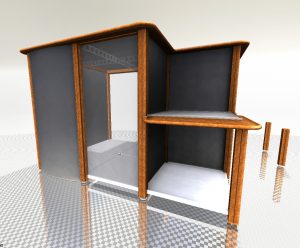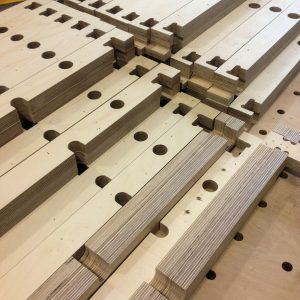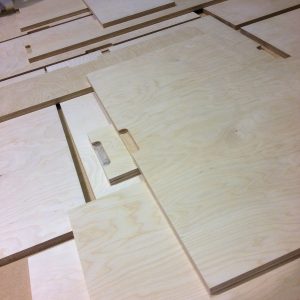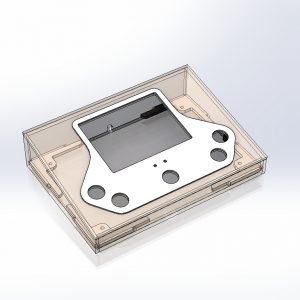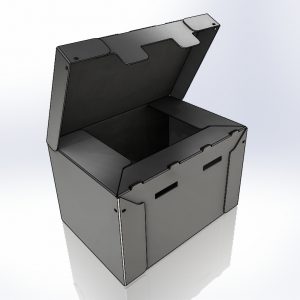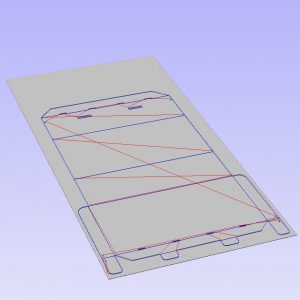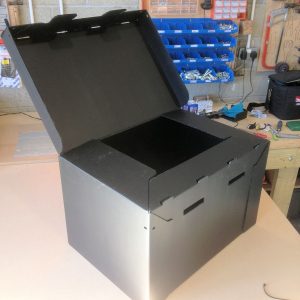 We have recently recorded a series of podcasts about Makersmith, our clients and our design and manufacturing processes. During one interview the interviewer said “So actually, you start with a squiggle and turn it into a real product?” – and of course the answer is “Yes, that’s exactly what we do…” but, like most things it isn’t quite as straightforward as that. First you have to have to ask what is a squiggle?, where does a squiggle come from? and lots more besides:
We have recently recorded a series of podcasts about Makersmith, our clients and our design and manufacturing processes. During one interview the interviewer said “So actually, you start with a squiggle and turn it into a real product?” – and of course the answer is “Yes, that’s exactly what we do…” but, like most things it isn’t quite as straightforward as that. First you have to have to ask what is a squiggle?, where does a squiggle come from? and lots more besides:
What is a squiggle?
The Oxford Dictionary definition is “A short line that curls and loops in an irregular way.” That’s sort of it, but not quite, our squiggle is much more than this…
Our squiggle can be:
- A very rough sketch of an idea on paper – or a paper napkin – or the back of your hand
- A thought that you can just about describe – in your mind – or in the mind of your client
- A shape that you have seen and that you can describe in space with your hands
- Something drawn in the sand on a beach
- A pattern that you have seen – the pine needles lying on a path, the waves on a beach, the texture of a fabric
- A set of words that describe what you want
And once seen, squigglers can say “I want it like this”; it’s a starting point on a path of design…
Where does a squiggle come from?
 In your dreams… . Ideas do come from dreams, perhaps one of the most fundamental was Niels Bohr when he was inspired to describe the structure of the atom by a dream. You may dream of products, structures, shapes, landscapes, machines…
In your dreams… . Ideas do come from dreams, perhaps one of the most fundamental was Niels Bohr when he was inspired to describe the structure of the atom by a dream. You may dream of products, structures, shapes, landscapes, machines…
The world around us: the natural world contains so many complex shapes, so many simple shapes and they can all inspire new products, new forms for products, new structures and inspiring buildings.
Our man-made world: often one idea, one shape or form or function will inspire others as contrast or reaction.
Necessity: sometimes only one shape will work or will fit in a space – only one squiggle will do…
 Competition: “I want one like that” or “ I don’t want one like that” are both powerful drivers for creators of things
Competition: “I want one like that” or “ I don’t want one like that” are both powerful drivers for creators of things
Clients: your clients have their own squiggles that they pass on to you. You end up with a whole pile of the things – it would be great if someone could take those from you and resolve the squiggles into something concrete…
Where does a squiggle go?
For us, squiggles always go somewhere; we are presented with a squiggle of thought, words or drawing and take it through a sometimes huge process to come out at the other end with a product – a thing – that the was the intention of the original squiggler. And the say “ah yes, that is just what my squiggle meant…”
Sometimes along the way one squiggle gives rise to others as we generate and select ideas, but always the squiggles become more fully formed as tangible shapes, components and processes develop.
That’s where our expertise lies – in taking the squiggle and delivering the living product.
Do you have a squiggle?
There’s always something that you can put into a squiggle. Our clients rely on us to take their ideas forward from that squiggle to the end product, we also generate squiggles, idea, concepts of our own for clients.
If you have a squiggle or your business has a squiggle, get in touch -we can make your squiggle live!
